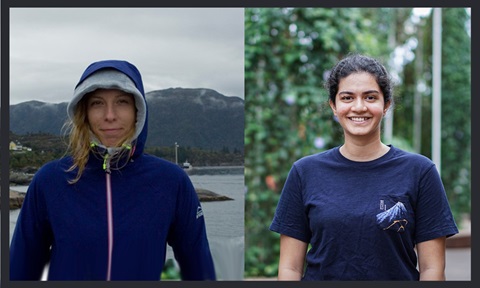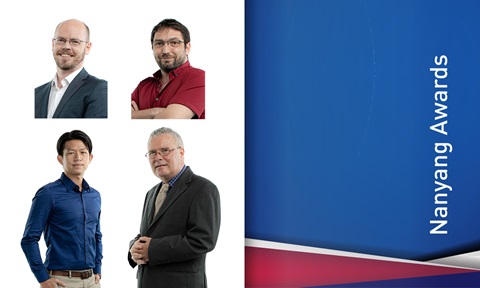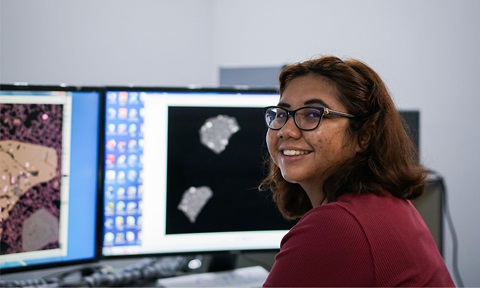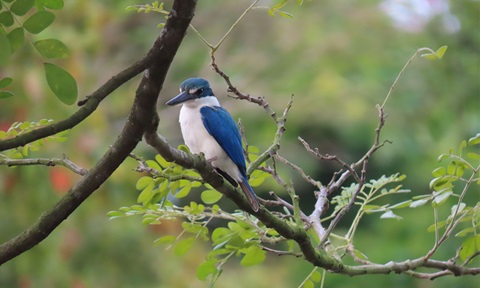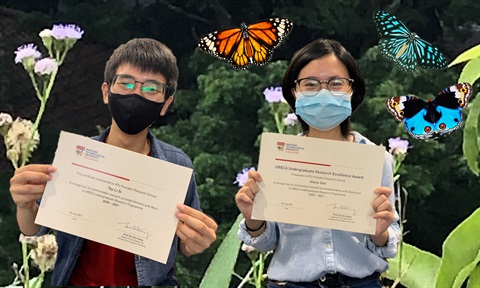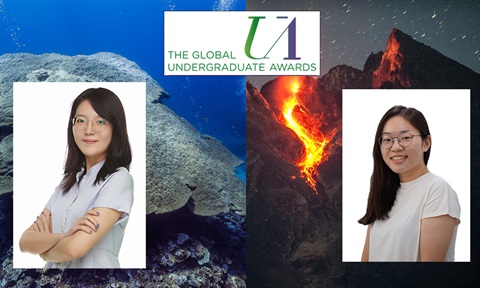ASE students research on plastic pollution and marine health in Singapore waters
 Roy Tan and Grace Tay (Photo: NTU).
Roy Tan and Grace Tay (Photo: NTU).
Two undergraduate students from the NTU Asian School of the Environment (ASE), Roy Tan and Grace Tay, have recently been awarded with the EXPLORE! Grant to conduct novel research on plastic pollution and marine diatoms in Singapore.
The Explore! grant is organised by the Marine Science Research and Development Programme (MSDRP) by the Singapore National Research Foundation with the St John’s Island National Marine Laboratory (SJINML), in collaboration with NIE-NTU. It aims to give research support in terms of equipment use, expertise, and monetary funding to students who are interested in undertaking exploratory marine science research at SJINML
A naval diver in his National Service (NS) days, Roy shared that it wasn’t the beauty of the underwater world that inspired him to take action, but the lack of nature which was replaced by the rubbish! He has hopes that we will be able to see pristine water off our coasts during his lifetime. Grace, for her part, has had a passion for the environment/natural world since young. Science@NTU spent some time with Roy and Grace, who generously recounted their experience so far and shared their aspirations as budding young marine scientists.
Could you give us an overview of your research projects?
Roy: Owing to its potential impact on the environment and human health, there has been rising interest in the investigation of Microplastic (plastic <5mm) pollution by the research community in recent times. Although current research recognizes the existence of microplastics from the coastlines of Singapore as of today, the distribution and abundance of microplastics in Singapore’s marine environment are not widely studied.
Grace: My project focuses on creating the first marine diatom (a kind of algae) libraries in Singapore. Some areas of application of the include ship ballast water testing (to avoid the introduction of harmful diatoms into new environments), or in the SFA’s 30 by 30 plan to have our own local fisheries. Understanding the planktonic composition in our waters is key to ensuring that we can produce healthy fish for food.
Roy: My study attempts to kickstart the establishment of a microplastic preparation protocol and library-aided detection workflow for the scientific community. This serves to improve the accuracy and efficacy of detection and characterization of microplastic in marine samples, while reducing the tedious and time-consuming workflows associated with traditional quantification methods. The libraries prepared in this project will also be open-sourced and publicly available, raising awareness and supporting the growth of citizen science research in Singapore.
Both Roy and Grace make use of fluid imaging technologies (FlowCam) available in SJINML. The FlowCam is a digital flow cytometer and microscope, a high throughput imaging machine capable of rapidly quantifying and identifying particles in liquid samples (be it microplastics or diatoms). It works by capturing images on a micro-scale (essentially, like a microscope) within its field of view at particular intervals as water is continually passed through the machine. It will allow more accurate and efficient sampling of water from the sea surface microlayer, followed by high-resolution image capture of suspended particles within.
Grace: The FlowCam is also coupled with the VisualSpreadsheet particle analysis software, which has image-recognition and machine learning capabilities, that allow these libraries to be created and run. I collect environmental samples, run them through the FlowCam, visually sort and identify the plankton images and test my libraries on the raw environmental data. I then compute the model metrics and see how well my libraries work!
Roy: My study attempts to kickstart the establishment of a microplastic preparation protocol and library-aided detection workflow for the scientific community. This serves to improve the accuracy and efficacy of detection and characterization of microplastic in marine samples, while reducing the tedious and time-consuming workflows associated with traditional quantification methods. The libraries prepared in this project will also be open-sourced and publicly available, raising awareness and supporting the growth of citizen science research in Singapore.

Roy and Grace are working with ASE Assoc Prof Federico Lauro (Photo: NTU). The photo was taken prior to Phase 2 Heightened Alert.
Why did you choose this research focus?
Roy: For context, I am currently working on a Undergraduate Research Experience on Campus (URECA) project which happens to be Grace’s CN Yang project initially. The ultimate goal of the project (and Assoc Prof Federico Lauro’s research grant) is to identify sources and impacts, and develop solutions for plastics in Southeast Asia’s coastal environments. While Grace worked on the prototyping of a device to sample microplastics in the sea surface microlayer for her project, I came in subsequently to refine and deploy the device under my project titled “Developing Novel sampling methods for the sea surface microlayer”. We also hope to publish a paper on this in the future.
While working on the project, Assoc Prof Federico was notified that the NRF was accepting applicants for the EXPLORE! Research grant. He suggested using SJINML’s piece of high-precision equipment called the Flowcam 8400 which may be particularly useful to study particles suspended in seawater, especially since we are involved in marine microbial and microplastic studies. He also advised us to link up with Dr. Sandric Leong in NUS and Tropical Marine Science Institute (TMSI), who is extremely knowledgeable in the field of marine phytoplankton.
Grace: Some species of diatoms can be harmful to fish species such as Chaetoceros and Pseudo-nitzchia, as they can clog the gills of fish (since they have cell walls that are essentially made of glass and some species of diatoms have long, sharp spines), and/or produce harmful toxins that affect the health of marine life.
Traditional microscopic work to analyse plankton in water can be highly technical, laborious and time consuming. It is hoped that through this project, these libraries and the FlowCam can allow anyone, regardless of industry and technical background, to be able to screen and identify plankton in any water sample (in this case, marine diatoms). Any organisation that owns a FlowCam can then use the same libraries to conduct water quality assessments.
What are your plans after graduation?
Roy: Once travel restrictions ease and the pandemic situation is under control, I’m definitely hoping for a graduation trip with my friends and peers! I’m looking forward to taking a break away from work, and I’m also considering a solo trip, or camping in the forest and chucking my electronic devices away!
I also intend to further my studies as I have always wanted to be an explorer, and I’m still deciding between a Master’s or PhD.
Grace: I am not entirely sure where exactly I would like to work at, however I do know that I would like to apply my skills in research to my career. Research to me is always a fascinating process, and you never know what to expect. I like the fact that through research, I am generate new knowledge and learning something new every other day. For now, I am thinking of pursuing a PhD after graduation.
Any advice to current undergraduates and prospective students?
Roy: Don’t be afraid to explore the fields that you are interested in before entering the workforce! Feel free to seek assistance or connect with any of our faculty; We also have a strong alumni network and your direct seniors (including myself) are very willing to help too.
There will be times that you face obstacles or failures along your undergraduate experience, however, the ASE community will always be there to support you and you’ll bounce back as a stronger person and researcher.
Grace:I would say that the best advice I can give is sizing every opportunity that interests you – ASE is a really good place for you to learn, explore and discover things be it in science or about yourself. The opportunities at ASE are abundant and plentiful, and the only thing you have to do is to take it, so just do it! At the same time, don’t be afraid to talk to the staff and seniors at ASE!
The titles of Roy’s and Grace’s research projects are:
“Building a Visual Database of Singapore’s Marine Diatoms using the FlowCam and looking at Diatom Diversity in relation with Tidal Patterns” and “Investigating Microplastic distribution in Singapore’s Marine Environment using FlowCam”. They are supervised by Assoc Prof Federico Lauro, head of the Singapore Laboratory for Integrative Microbial Ecology (S.L.I.M.E.).


